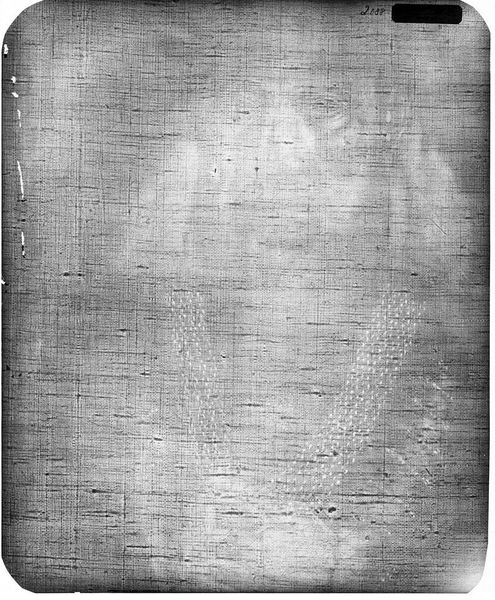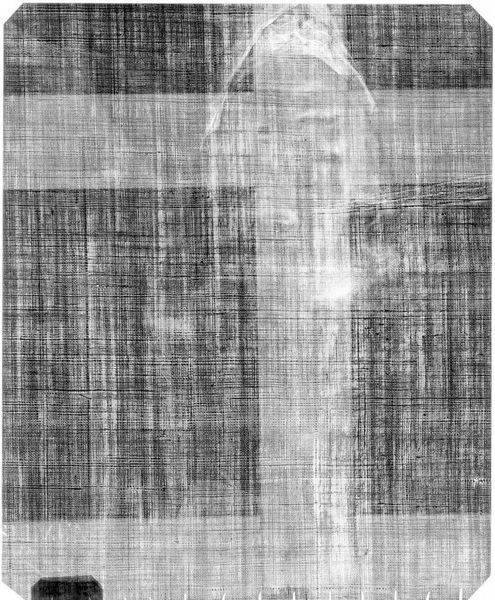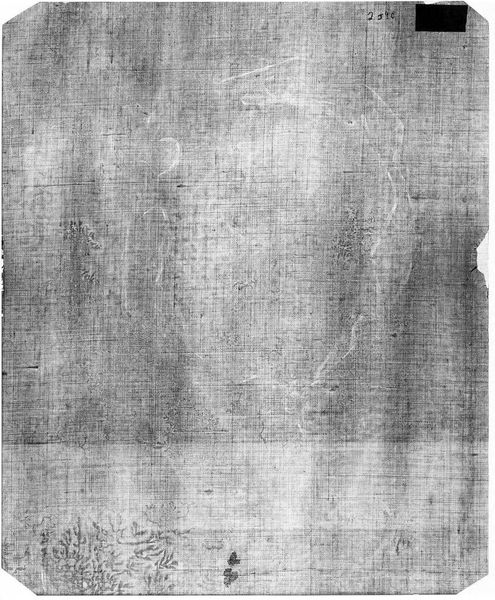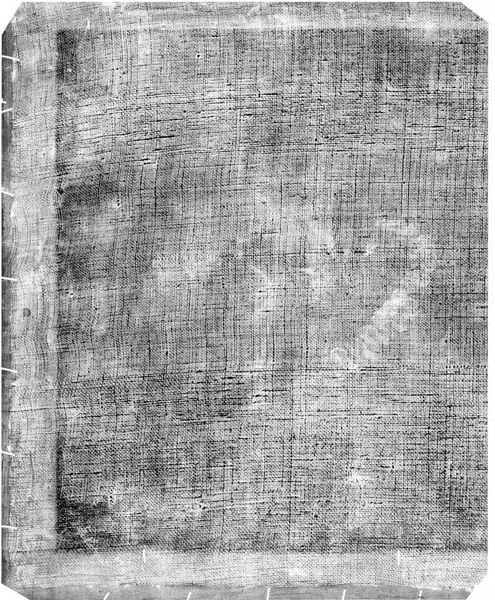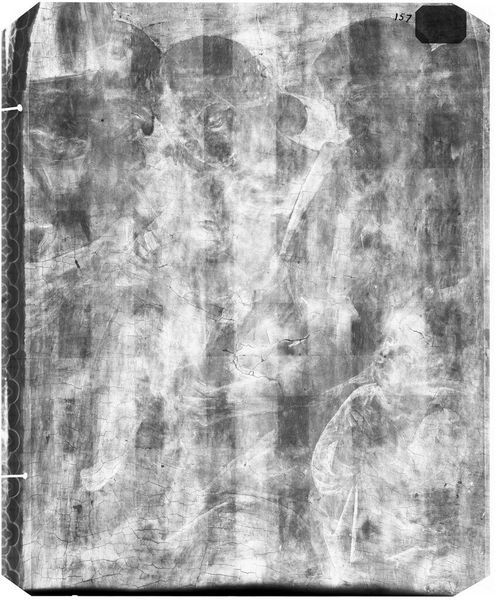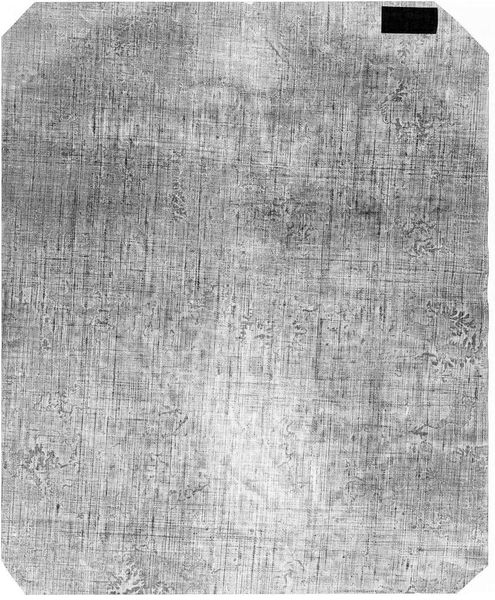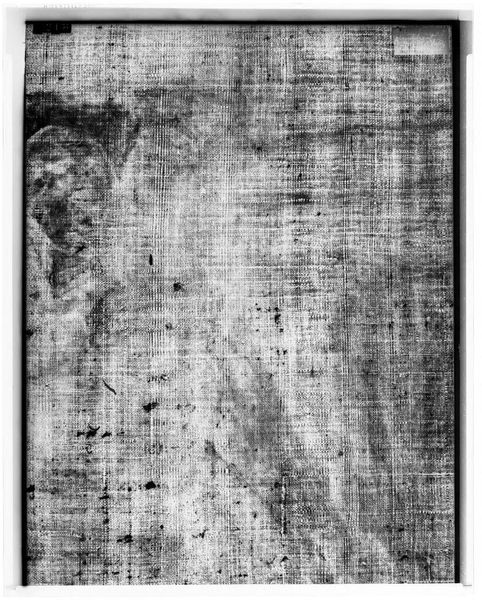
Dimensions: film size: 14 x 17
Copyright: CC0 1.0
Curator: So, here we have an X-radiograph of “Ellis Gray,” after the original portrait by Joseph Badger. It’s fascinating, isn’t it? Editor: It’s like peering into the soul of a painting. I'm immediately struck by the grid, the fabric’s warp and weft, almost like a secret map. Curator: Precisely! This radiograph reveals the canvas beneath Badger's brushstrokes, offering us insights into his working methods and the materials used. It's a glimpse behind the curtain of 18th-century portraiture. Editor: It's also a reminder of the physical objecthood of art. We often forget the labor, the canvas, the stretchers—all those hidden layers that support the image we see. Curator: Absolutely. X-rays like this play a critical role in conservation, allowing us to understand a painting’s condition and plan for its preservation. But they also change how we perceive the artwork itself, demystifying the creative process. Editor: This work makes me think about the layers of history and interpretation involved in viewing any artwork, not just the final image but the backstory, the materials, the artist's intention, and what the future holds. Curator: Indeed, it transforms our perception of a portrait into a multi-layered narrative, a tangible story. A great conversation starter, I think.
Comments
No comments
Be the first to comment and join the conversation on the ultimate creative platform.


